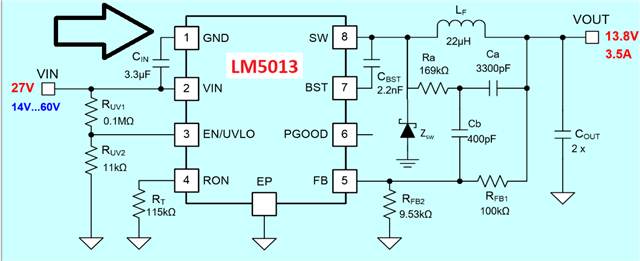Other Parts Discussed in Thread: LMR51635, LM65645, LM5013-Q1, LM5013
Hi,
I am currently designing a custom board using the LMR51635, and I am referencing the LMR51635 Buck Evaluation Module design as a starting point. While reviewing the user guide (document SLUUCT3A), I noticed a discrepancy between the schematic and the Bill of Materials related to the output capacitors.
The schematic labels the output capacitors as 33 µF, whereas the BOM lists them as 22 µF (X7R, 25 V). I would like to ensure my design matches the components actually used on the official EVM.
Taking into consdieration that my VOUT is 13.8V not 5V.
Could you please confirm:
-
For the Cout, what is the exact recommended part number in my VOUT case (13.8v)?
- For the inductance, what is the exact recommend part number in my VOUT case (13.8v)?
Your clarification will help me ensure component accuracy and optimal regulator behavior in my application.
Thank you in advance for your time and support.








